2018 will be the year of the visitor… or the year businesses actually start taking their visitors’ needs seriously.
1. Search Engine Optimisation (SEO or organic search)
Mobile marketing SEO techniques will be particularly important in 2017 with Google’s recent announcements about the mobile index and AMP. We have seen huge increases in AMP smartphone traffic since September 2016 when Google rolled AMPs out beyond Google News. AMPs are targeted at publishers, but should be considered by businesses with an active blog too in my opinion.
#1: Voice search will be more than 25% of all US Google searches within 12 months. Despite this, desktop volume will stay nearly flat and mobile (non-voice) will continue to grow.
#2: Google will remain the top referrer of website traffic by 5X+. Neither Facebook, nor any other source, will make a dent.
2. Paid search marketing
Google AdWords is the most important form of Pay Per Click and here Google has been pursuing their ‘Mobile-first’ strategy by building out these features.
In the marketing world, pay-per-click,or PPC , is critical to success. PPC is a model of Internet marketing in which the advertiser pays a charge whenever their ad is clicked. PPC advertising offers a cost-effective way to boost an advertisement online while still netting a considerable profit. It also allows your organization’s results to appear before competitors and the organic listings.
Implementing PPC into your marketing strategy offers a slew of benefits that emphasize its importance such as:
- Google AdWords
- Keywords –
- Cost-Effective
- Negative
Google will offer paid search ads in featured snippets, knowledge graph, and/or carousels.
3. Content marketing trends
According to the Aberdeen Group, content marketing leaders experience 7.8 times higher year-over-year growth in unique site traffic. What’s more, content marketing costs 62 percent less than outbound marketing, while generating more than 300 percent more leads. And companies that adopt content marketing get six times higher conversion rates than their competitors.
Content marketing has been in the top 3 for the last 3 years. According to the Content Marketing Institute, the three most commonly used tactics by B2B marketers are social media content, case studies, and blogs. Most companies are implementing these tactics, which means it’s getting harder and harder to differentiate to grow your business.
This year however, we have seen the arrival of new content marketing trends that are changing the way content marketing works.
Video marketing is by far one of the most effective marketing tactics.
Live streaming is a powerful content marketing tactic because of transparency. People love brands that are real; brands that talk, act, and look like them. They want to know what’s happening behind the scenes, how brands actually are when others are not around. People want to feel as if they are having a one-on-one interaction with the brands they like.
Live streaming is also becoming popular because it helps create a feeling of community. You aren’t just communicating with your followers—they are also talking to each other. This takes the idea of social communications to the next level. Brands interact with their customers, and their customers interact with each other. Since a community is not something you can artificially create, this can be a big win for your company.
Furthermore, if you want to use a live stream later, you can easily record it and play it back to make it into a conventional video.
The power of live videos is only just starting to be harnessed. In 2016, only 14 percent of marketers had used live videos. In 2017, 50 percent of marketers plan on using them.
4. Chatbots
Now you can with the help of chatbots, programs that exist within messaging apps such as Kik or Facebook Messenger. They allow you to have automated conversations with your customers in real-time.
Chatbots can help you change your communication from a brand-focused perspective to a customer-focused one. You create a more personal relationship while addressing the specific needs of your audience.
Two Types of Chatbots
- Rule-based, in which a user receives a pre-defined response based on an input.
- Natural Language Processing (NLP) based, in which the bot analyzes the user message to extract intent and create a more individualized response.
Both types of chatbots allow your users to interact in a conversational format to get a solution to a need. If your bot has that solution, your user leaves the conversation happier and satisfied with your brand. On the other hand, if your bot can’t give them an answer you can use the information taken from that conversation to create content around them.
Using chatbots represent a win-win for both parties. Your company increases the relevancy of its content, and your visitors get better solutions.
In 2016 preppy fashion brand Tommy Hilfiger used a Facebook Messenger bot during New York’s Fall Fashion week to display their products and answer questions. It ended up with over 7,000 responses and an engaged audience.
5. Mobile marketing (Mobile advertising, site development and apps)
Mobile was in the top 3 three years ago, but as more companies have adopted mobile responsive web design and email templates they have seen less need to focus on it, or at least there are fewer opportunities for growth.
However, research shows that retail conversion rates are significantly lower on smartphone, so there is work to be done for many businesses to optimise conversion on mobile, although they will likely always stay lower than desktop.
Mobile also has a large impact on search marketing as Google vigorously follows its mobile first mantra. To me, it’s a somewhat misleading mantra, since the reality is that many web users are still using desktop, laptop and tablet devices and there is a danger with mobile responsive designs that conversion on higher resolution screens may fall if mobile optimised. Instead, leading companies are looking at adaptive mobile design approaches which have the benefit of serving more relevant, contextual content and CTAs for users and reducing load times.
‘Mobile first’ is also misleading if we look at the overall customer journey since often different devices may be involved at different points. So a better vision for mobile strategy is treating it as part of a multiplatform or multichannel strategy. As this data from comScore highlighted in our mobile marketing statistics researchshows, the multiplatform ribbons for all countries are much broader than users who are mobile only or desktop only.
6. Social media marketing including Social CRM and Social Customer Care
When I meet marketers at events and training I find there is still huge interest in social media, thanks to its reach and options to engage audiences and encourage advocacy or ‘social media amplification’ to give it the full treatment.
Our social media research statistics summary shows continued growth in social media usage overall, but with reduced popularity of some social networks in some countries. For example Twitter and Facebook are in decline or plateauing in many western markets while Snapchat, Instagram and Pinterest are still growing in usage.
Trends in social media marketing are often controlled by the efforts of the social networks to monetise and this has seen Facebook and Instagram, in particular make changes such that businesses now need to ‘pay to play’ to get the reach needed to have an impact. They have continued to innovate in their targeting and remarketing options. Jason DeMeyers has these interesting views on social media trends for 2018.
7. Native advertising will flourish
Back in the good ol’ days, online advertising was defined by intrusive pop-up ads and annoying flashing sidebar ads. And it’s important to remember that most of those ads were irrelevant and spammy.
While there are still plenty of ads like this, native advertising has helped online ads become more user-friendly. And to ensure that users don’t click on unwanted ads, brands are required to clearly label these ads as such. Websites like BuzzFeed, Mashable, and even The New York Time soffer sponsored content that relate the ads to content users are already interested in viewing.
Brands are also taking advantage of the native advertising potential on social media sites like Facebook, Snapchat, and Instagram. With Facebook pushing their Promoted posts and ads and Instagram releasing it’s “Shop Now” button, we’re sure to see more online native advertising in the coming year.
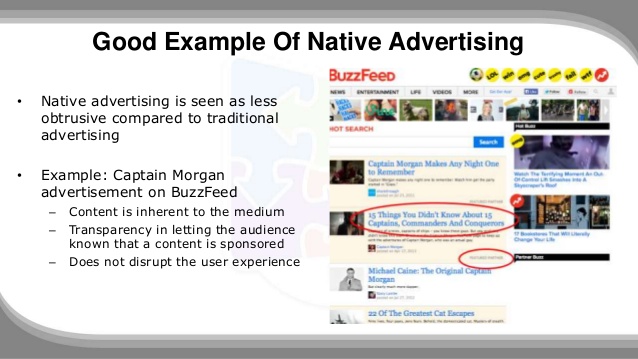
8. Live video will take over (At least with social media and content marketing)
Consumers have become accustomed to carrying around mobile devices and having practically anything they need right at their fingertips. Now, both brands and individuals have begun using livestreaming as a way to be more in-the-moment with their followers (capitalizing on that whole #FOMO trend of the last couple years).
In the past, brands chalked up their entire video marketing strategy to the hope that one of their videos would go viral. However, as video (live video, in particular) becomes a larger part of users’ everyday lives, brands are going to have to work on continuously creating quality video content.
9. The shift from Desktop-First to Mobile-First will continue
Mobile search has always been an important component of SEO — and of digital marketing in general — so it’s no surprise that its role continues to grow as years pass. In 2015, Google released a mobile-friendly update to their search algorithm. Since this update, mobile-friendly websites have had the advantage over others when it comes to mobile rankings.
Today, many businesses are receiving more traffic from mobile search over desktop. In fact, Moz performed a study that showed 20 out of 24 industry niches note mobile as their primary source of web traffic. As technology progresses and Google continues to reward those with mobile-friendly sites over others, we have no doubt that the mobile-first trend will continue to rise and most likely overcome our desktop-first mentality.
10. People are going to want to see the data
Data is key to knowing the who’s, what’s, when’s, why’s, and how’s of your marketing strategy. However, that doesn’t mean analyzing data is easy. In all honesty, it can be boring and immensely time-consuming when done properly. Even if you analyze data every day, digesting all those numbers can be tricky.
Thankfully, there are plenty of data visualization tools that can help. As technology evolves, so are visuals; and as more data visualization tools become available, the more businesses are going to start using them. In addition, as narrative content grows in popularity, the need for visual storytelling grows.
Keeping these technological and content marketing trends in mind, 2017 is probably just the beginning of the data visualization revolution.
www.pushtiwebindia.com
www.pushti.in
www.incabrescia.com
www.seospecialistmumbai.com
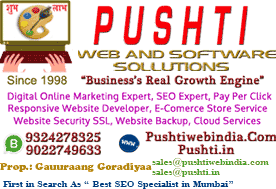
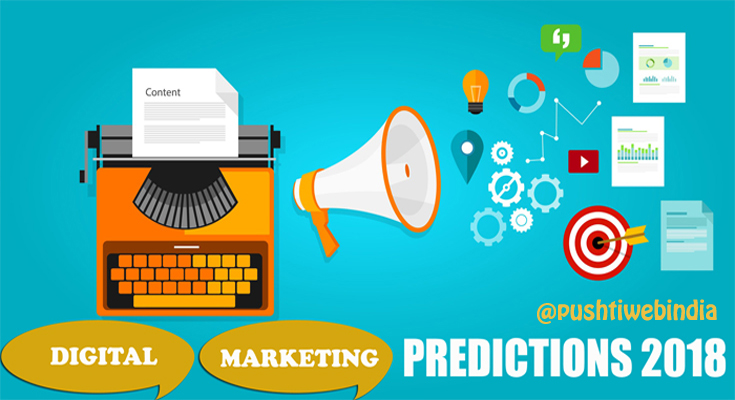


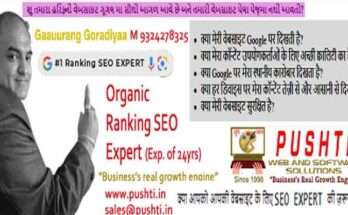

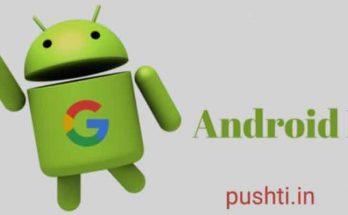
Jay ho